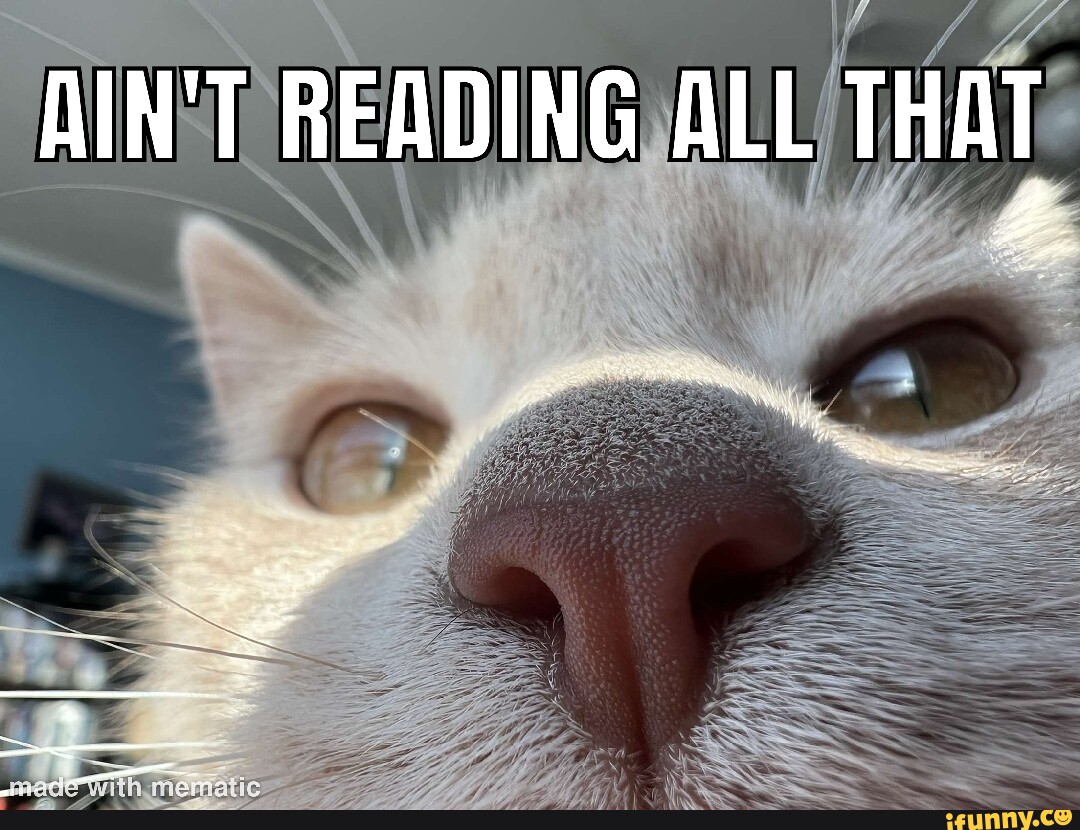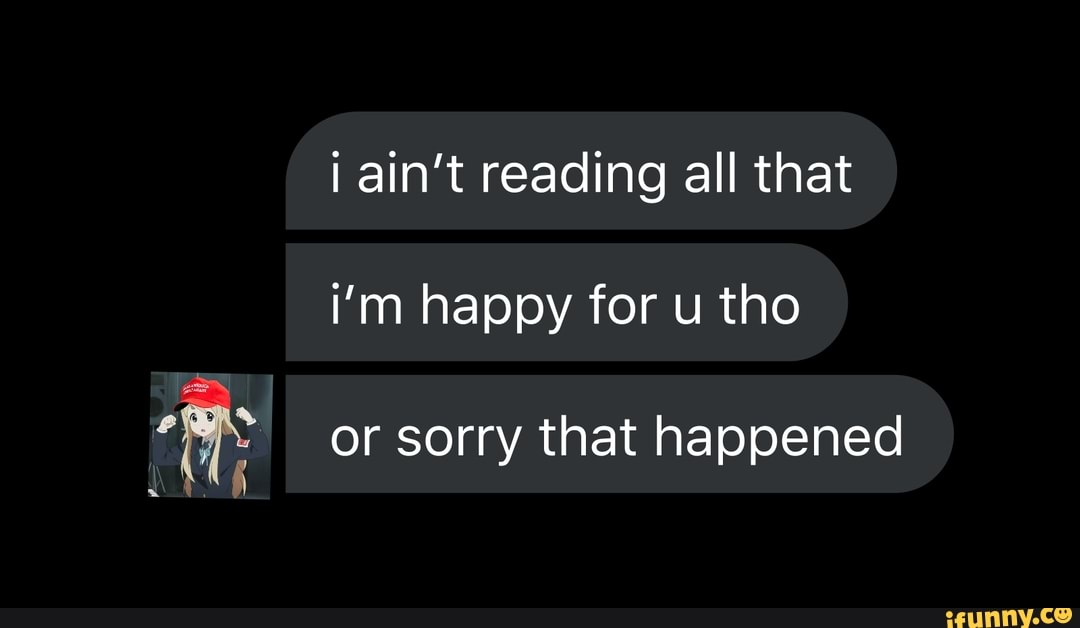Why I Ain't Reading All That Is The New Age Mantra
In an era where information is abundant and attention spans are dwindling, the phrase "I ain't reading all that" has become a common refrain among individuals navigating the digital landscape. It reflects a sentiment many share—why sift through lengthy articles or dense texts when you can grasp the essence in a few seconds? This article delves into the implications of this mindset, exploring its roots and the impact on communication, learning, and society as a whole.
The evolution of technology has amplified our access to information, but with this abundance comes a paradox: the more we have to read, the less we seem to want to engage with it. People are inundated with emails, articles, social media posts, and messages that compete for their attention. As a result, the phrase "I ain't reading all that" encapsulates a growing frustration and a need for brevity. It is a declaration of our modern reality—where quick consumption often trumps in-depth understanding.
As we continue to embrace this culture of short attention spans, we must ask ourselves: what are we sacrificing in exchange for speed and convenience? Is the loss of comprehensive understanding worth the trade-off for instant gratification? In this article, we will explore the multifaceted dimensions of the phrase "I ain't reading all that," from its origins to its implications in various fields such as education, journalism, and interpersonal communication.
What Does "I Ain't Reading All That" Really Mean?
The phrase "I ain't reading all that" is often used to express disinterest or overwhelm in the face of lengthy content. It serves as a cultural commentary on how we process information in the digital age. But what does it reveal about our society and our approach to learning?
Is Brevity Truly the Soul of Wit?
In many ways, the mantra "I ain't reading all that" champions the idea that less is more. The preference for succinctness can be seen in various forms of communication, from tweets to text messages. But does this emphasis on brevity enhance or hinder our understanding of complex topics?
Are We Missing Out on Deeper Insights?
When we choose to bypass lengthy articles or discussions, we may be missing out on rich insights and nuanced perspectives. This raises the question: are we sacrificing depth for the sake of convenience? The answer may vary depending on the context and the individual's learning style.
How Does "I Ain't Reading All That" Affect Education?
The educational landscape has also been influenced by this trend. With students often declaring "I ain't reading all that" in response to lengthy textbooks or assignments, educators are faced with the challenge of adapting their teaching methods. But how can they effectively engage students in a world where brevity reigns supreme?
Can Visual Media Compensate for Textual Content?
One potential solution lies in the integration of visual media. Infographics, videos, and interactive content can provide a more engaging way to convey information without overwhelming the audience. But does this shift mean that traditional reading is becoming obsolete?
What Role Does Critical Thinking Play?
While consuming shorter content may seem more appealing, it can also impede the development of critical thinking skills. An over-reliance on bite-sized information may lead to a superficial understanding of topics. Are we inadvertently training ourselves to think less critically as we embrace the "I ain't reading all that" mentality?
What Are the Implications for Journalism?
The journalism industry has also felt the impact of this trend. As news outlets strive to keep up with the demand for quick, digestible content, the question arises: are we compromising journalistic integrity in the process? The phrase "I ain't reading all that" symbolizes a potential shift in how news is reported and consumed.
Can Headlines Replace In-Depth Reporting?
In an age where clickbait headlines reign supreme, there is a growing concern that audiences will settle for sensationalism over substance. How can journalists adapt to a landscape where readers often declare "I ain't reading all that"? The challenge lies in finding a balance between engaging headlines and thorough reporting.
Are We Diminishing the Value of Long-Form Journalism?
Long-form journalism has long been a respected medium for in-depth storytelling and analysis. However, with the rise of quick content consumption, its value is being questioned. Are we at risk of losing a vital outlet for comprehensive reporting in favor of shorter, less informative articles?
How Can We Navigate This New Normal?
As we confront the reality of "I ain't reading all that," it becomes essential to find ways to engage with information meaningfully. Here are some strategies to navigate this new normal:
- Prioritize quality over quantity: Seek out content that offers in-depth analysis rather than skimming through numerous articles.
- Utilize summaries and abstracts: Look for condensed versions of lengthy texts to grasp the main ideas without diving into every detail.
- Engage in discussions: Participating in conversations about complex topics can enhance understanding and retention.
- Set limits: Allocate specific times for reading longer pieces to avoid feeling overwhelmed.
What Lies Ahead for Our Reading Habits?
The future of reading habits remains uncertain, but one thing is clear: the phrase "I ain't reading all that" is more than just a dismissal of lengthy content. It reflects a broader cultural shift that prioritizes speed and accessibility. As we adapt to this new landscape, it is crucial to remain mindful of the trade-offs involved in our consumption of information.
In conclusion, while "I ain't reading all that" may serve as a practical response to an overwhelming amount of content, it is essential to consider the implications of this mindset. By striking a balance between brevity and depth, we can cultivate a more informed and engaged society.



ncG1vNJzZmivp6x7s7HBnqOrmZ6YtbjFzmeaqKVfnru0tcahq6xtX556orXNrWSrnZGZtq%2BzjJqjpWWkna61esetpKU%3D